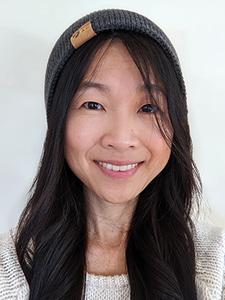 |
|
| Monica Cheng | |
Monica Cheng, Ten Speed Young Readers's designer, has been featured by West Elm, Minted, and Food Network. Her design campaigns have peppered across the San Francisco Bay Area, including displays at the SF War Memorial Performing & Arts Center. Cheng approaches design—and life—with an eye toward childlike wonder, silly humor, meaningful connection, and simple delight.
How does design play a part in what Ten Speed Young Readers does as an imprint?
At Ten Speed Young Readers, we place a high value on crafting books with a distinctive charm and aesthetic. We strive to connect with our young readers through thoughtful design and packaging. Many people think that the story begins on page one of a book. In reality, the experience begins on the cover (or in many cases, the spine, if that is the first touchpoint). We then take our audience from the cover, through the endpapers, to the title page, and by the time they reach page one of the story, they are already in the story. The package of the book—how it feels in our hands, the special effects (or intentional lack thereof) on the jacket, the glossy or natural coating of the paper stock—all play a role in a reader's experience. And we haven't even touched on the typography and art yet! The art style and the typefaces we use are purposefully considered to ensure that the overall visual aesthetic serves the content. All these decisions help make for an immersive experience, allowing the book to serve as a point of connection or a bridge to other worlds.
How do you translate content from your adult list to make it suitable for children?
We begin by going back to the skeleton of the content. Much like remodeling a house—what are the weight-bearing beams of the content and structure that must remain in order to maintain its message and personality? We also consider the physical constraints. Think of this as redecorating the newly renovated house. For example, if we are converting a 200-page book into a 20-page board book, there's a lot of editing down and simplifying the space. We're challenged to be intentional about curating every word and every art placement. In a children's book, every inch of real estate counts. Then there is the task of translating the author's tone and language into an age-appropriate voice, both editorially and visually. Illustration and typography styles all have a visual voice. Soft or bold? Serious or playful? How will the typography and art interact with each other to tell a cohesive story? How can we use patterns, rhythm, repetition, and good ol' silliness to effectively engage our young readers? This is where the magic happens between the words themselves and the design choices we make.

